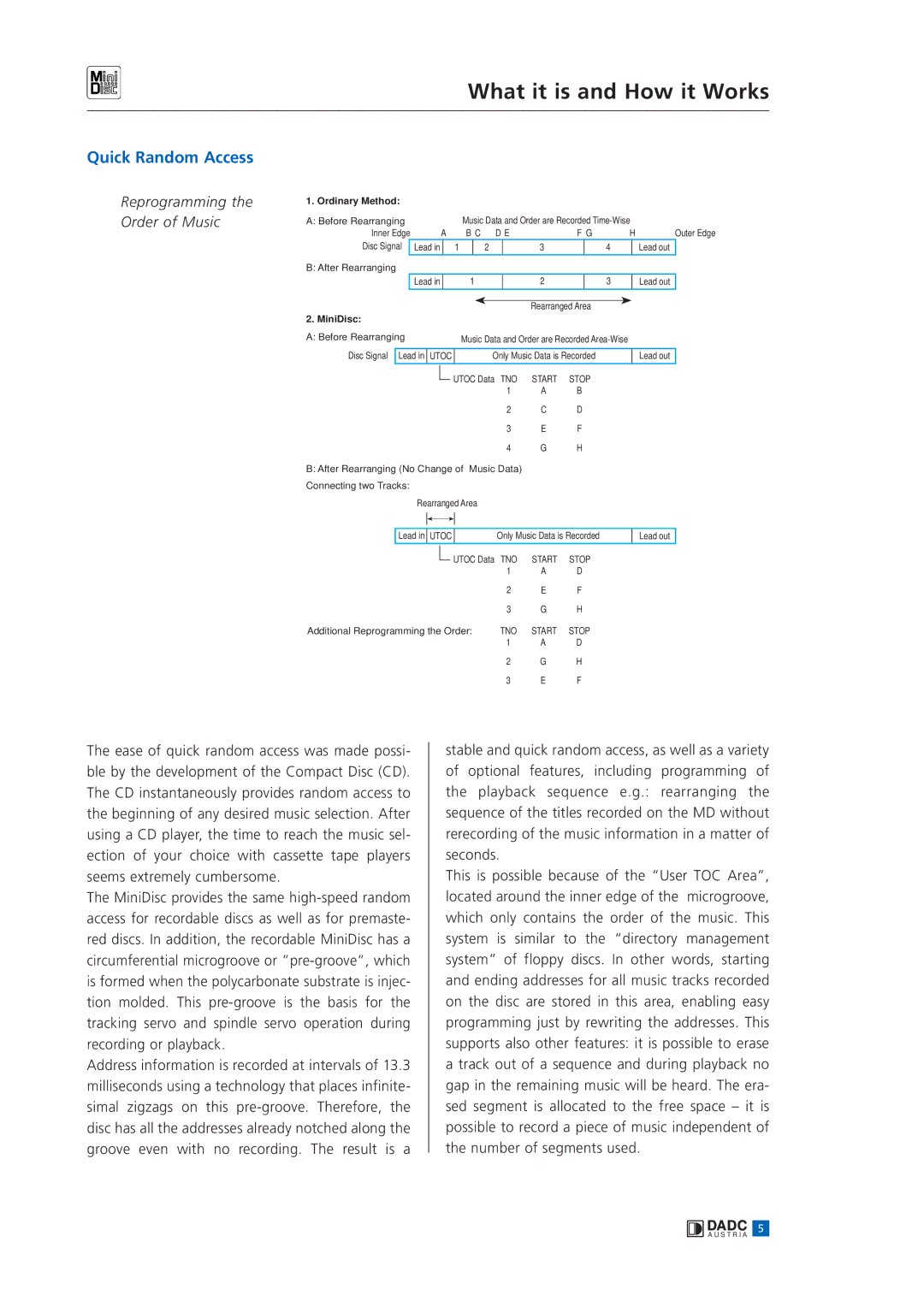
What it is and How it Works
Quick Random Access
Reprogramming the Order of Music
1. | Ordinary Method: |
|
|
|
|
|
|
|
|
|
|
|
|
|
| |
A: Before Rearranging |
|
|
| Music Data and Order are Recorded |
|
| ||||||||||
| Inner Edge | A | B C | D E | F G |
| H |
| Outer Edge | |||||||
| Disc Signal |
| Lead in |
| 1 |
| 2 |
| 3 |
| 4 |
|
| Lead out |
| |
B: After Rearranging |
|
|
|
|
|
|
|
|
|
|
|
|
|
|
| |
|
|
| Lead in |
|
| 1 |
|
| 2 |
| 3 |
|
| Lead out |
| |
|
|
|
|
|
|
|
|
|
|
|
|
|
|
|
|
|
|
|
|
|
|
|
|
|
|
| Rearranged Area |
|
|
|
|
| |
2. | MiniDisc: |
|
|
|
|
|
|
|
|
|
|
|
|
|
| |
Lead out
| Lead in | UTOC |
| Only Music Data is Recorded | Lead out | ||||
|
|
|
| UTOC Data | TNO | START | STOP |
| |
|
|
|
|
| |||||
|
|
|
|
|
| 1 | A | D |
|
|
|
|
|
|
| 2 | E | F |
|
|
|
|
|
|
| 3 | G | H |
|
Additional Reprogramming the Order: | TNO | START | STOP |
| |||||
|
|
|
|
|
| 1 | A | D |
|
|
|
|
|
|
| 2 | G | H |
|
|
|
|
|
|
| 3 | E | F |
|
The ease of quick random access was made possi- ble by the development of the Compact Disc (CD). The CD instantaneously provides random access to the beginning of any desired music selection. After using a CD player, the time to reach the music sel- ection of your choice with cassette tape players seems extremely cumbersome.
The MiniDisc provides the same
Address information is recorded at intervals of 13.3 milliseconds using a technology that places infinite- simal zigzags on this
stable and quick random access, as well as a variety of optional features, including programming of the playback sequence e.g.: rearranging the sequence of the titles recorded on the MD without rerecording of the music information in a matter of seconds.
This is possible because of the “User TOC Area”, located around the inner edge of the microgroove, which only contains the order of the music. This system is similar to the “directory management system” of floppy discs. In other words, starting and ending addresses for all music tracks recorded on the disc are stored in this area, enabling easy programming just by rewriting the addresses. This supports also other features: it is possible to erase a track out of a sequence and during playback no gap in the remaining music will be heard. The era- sed segment is allocated to the free space – it is possible to record a piece of music independent of the number of segments used.
DADC 5
A U S T R I A
